Neatorama |
- The World's Most Beautiful Library
- There Are Only 2 Escalators in Wyoming
- 26 Weird Animal Mating Habits
- Make it a Dark Mocha Frap With White Chocolate Pudding Please
- Geeky Sweater T-Shirts
- <i>My Little Pony</i> Proton Pack
- Jane Austen Banknote
- Liberty Bell Bike Bell
- The Mouseunculus
- Internet Rumor: The Royal Baby Is Named After a <i>Seinfeld</i> Character
- True Facts About The Owl
- Radioactive Fountain of Youth
- Yukon Gold Rush Photo Album
- Bam! Pow! Biff! Batman Shoes!
- If We Could See Wi-Fi
- War of 1812 Chess Set
- Silicon Valley Then and Now
- The Peanut Butter Sandwich 2.0
- Wonder Woman Night Light
- Bear Rescued from Bear-proof Dumpster
- Iron Pony: The <i>My Little Pony</i> Custom Motorcycle
- Mark Bryan's Things From Space
- A Knitted Jayne's Cap Cupcake
- Tumbleweed Tango
- That's Not An Iceberg, Silly Walrus
- 10 Missing Treasures You Should Really Be Looking For!
The World's Most Beautiful Library Posted: 25 Jul 2013 04:00 AM PDT
Over the years, Neatorama's own Jill Harness has collected photos of the world's most beautiful libraries. This one above is the Trinity College Library in Dublin, Ireland:
Jill has compiled the list of 61 other amazingly beautiful libraries over at mental_floss. See if your favorite library is listed: Link | ||||||||
There Are Only 2 Escalators in Wyoming Posted: 25 Jul 2013 03:00 AM PDT
Link -via Joe Carter (Unrelated photo via Jeramey Jannene) | ||||||||
Posted: 25 Jul 2013 02:00 AM PDT One of the most popular Netaorama posts ever was 30 Strangest Animal Mating Habits in 2007. We've told you about quite a few more since then. Now mental_floss video has Johnn Green quickly explaining some very strange ways Mother Nature gets different animals to reproduce. It all probably makes perfect sense if you're one of these animals. At least we hope so. | ||||||||
Make it a Dark Mocha Frap With White Chocolate Pudding Please Posted: 25 Jul 2013 01:00 AM PDT
How do you kill time in the Soekarno-Hatta International Aiport in Jakarta, Indonesia? I suggest browsing the overpriced handi-crafts, mulling over the $75 USD civet coffee, and than sitting down to a cold and refreshing Dark Mocha Frappuccino with White Chocolate Pudding from Starbucks.
Mmm...chunky. | ||||||||
Posted: 25 Jul 2013 12:00 AM PDT
Geek credentials? Check. Gaming prowess? Check. Chic style? Check, check, check! Matt Parsons designed these excellent Christmas sweater-inspired T-shirts, perfect for your favorite geek. Available at the NeatoShop: Link Check out Matt's official website and Facebook page, then visit his NeatoShop page for more awesome T-shirts: Link
Are you a professional illustrator or T-shirt designer? Let's chat! Sell your designs on the NeatoShop, earn generous royalties, and get featured in front of tons of potential new fans on Neatorama! | ||||||||
<i>My Little Pony</i> Proton Pack Posted: 24 Jul 2013 11:00 PM PDT
When people are grumpy, who you gonna call? A friend of Judson Hudson loves to cosplay as a Ghostbuster and Pinkie Pie from My Little Pony. This custom proton pack will let her do both at the same time. It lights up and plays appropriate sounds for blasting ghosts and turning frowns upside down. You can hear it in action in the video below. | ||||||||
Posted: 24 Jul 2013 10:00 PM PDT
After an outcry of protest that the banknotes of the British currency are mostly filled with faces of men, the Bank of England is going to release a new £10 note featuring Jane Austen:
Pound and Prejudice, it seems: Link | ||||||||
Posted: 24 Jul 2013 09:00 PM PDT | ||||||||
Posted: 24 Jul 2013 09:00 PM PDT
You've probably seen sensory maps (homunculus) that show how much of the brain is devoted to the senses from different parts of the body. This picture shows a sort of sensory map for a mouse in that the body parts are resized to show how much of the brain is devoted to each. The face spots represent the whiskers. It looks like a children's cartoon version of a mouse, doesn't it? An article at The Loom shows the same mouse drawn in normal proportions, and also a sensory map in which scientists manipulated the genes of baby mice to see how the map would be affected. They already knew that experience shapes the sensory map as an animals grows, but genetics and therefore chemistry also play a part. Read more about this research in the article by Carl Zimmer. Link | ||||||||
Internet Rumor: The Royal Baby Is Named After a <i>Seinfeld</i> Character Posted: 24 Jul 2013 08:00 PM PDT
The newborn son of Prince William and Kate Middleton is named George Alexander Louis. This is significant:
-via Ace of Spades HQ | ||||||||
Posted: 24 Jul 2013 07:00 PM PDT The latest in Ze Frank's "True Facts" series is about owls. You'll see cute, creepy, and weird owls, as expected, and just a little gore, because they are predators. -via Buzzfeed | ||||||||
Posted: 24 Jul 2013 06:00 PM PDT
According to legend, Spanish conquistador Juan Ponce de Leon traveled half the world looking for the Fountain of Youth. Little would he expect that such a thing may actually be gushing from a small green-tiled fountain on the sidewalk in a little town in Florida. But before you rush to get a drink from the Fountain of Youth, you should know that the water is radioactive:
Jackie Snow of National Geographic has the fascinating story: Link | ||||||||
Posted: 24 Jul 2013 05:00 PM PDT
Heritage Auctions in Dallas had a photo album in their June auction featuring 40 photographs from the Yukon Gold Rush. It once belonged to Patterson Billups, who lived in the Klondike from 1898 to 1910. Some of the pictures, published at Observatory, show boomtowns, wealthy landowners, hard working miners on site, First Nations people, landscapes, and formal group pictures. Link -via Everlasting Blort | ||||||||
Posted: 24 Jul 2013 04:00 PM PDT
Sound effects, Batman logos and the Gotham skyline covered in rhinestone sparkles all what girl wouldn't want these sweet Batman heels? They'd be perfect for any aspiring Batgirl and you can get your own over at WickedAddiction's Etsy shop. | ||||||||
Posted: 24 Jul 2013 03:00 PM PDT
Artist Nickolay Lamm (previously at Neatorama) wondered what Wi-Fi would look like if it were visible. He partnered with NASA astrobiologist M. Browning Vogel to illustrate it.
See several different ways Lamm illustrated the information at Fast Co. Exist. Link -via | ||||||||
Posted: 24 Jul 2013 02:00 PM PDT
Here's an appropriate chess set to mark the bicentennial of the War of 1812 between the United States and the United Kingdom. Jim Arnold, a custom chess set maker in Ronda, North Carolina, crafted this set inspired by the August 19, 1812 battle between the USS Constitution and HMS Guerriere. That was one of the few American naval victories during the war and the battle in which America's revered "Old Ironsides" earned her sobriquet. | ||||||||
Posted: 24 Jul 2013 01:00 PM PDT
Silicon Valley got its name from from its industry, but that wasn't just the brain trusts that call the area home now. From the mid-'60s to the mid-'80s, its towns were booming with factories, making hi-tech components for the computer age. Alexis Madrigal found a copy of Rich's Guide to Santa Clara County's Silicon Valley, published in 1983. This inspired him to find out how the area had changed in the past thirty years, from the computer chip manufacturing center it once was to the office space it is now. He found out the transformation of Sunnyvale, Palo Alto, Cupertino, Mountain View, and San Jose didn't come about just from global outsourcing. See, when those factories were built, they were revolutionary in that they didn't "look" like factories.
So Silicon Valley became dotted with Superfund sites. Read more about it at the Atlantic. Link | ||||||||
The Peanut Butter Sandwich 2.0 Posted: 24 Jul 2013 12:00 PM PDT
Peanut butter and jelly...pshhh, that's so cliche. If you really want a satisfying snack, try a peanut butter sandwich 2.0 that will provide you with 9 different flavor combinations in only one delicious sandwich. Link Via Cheezburger | ||||||||
Posted: 24 Jul 2013 11:00 AM PDT
Are you afraid of the dark? Now you don't have to be with the Wonder Woman Night Light from the NeatoShop. This beautiful porcelain night light features your favorite warrior princess. Be sure to check out the NeatoShop for more great Night Lights. | ||||||||
Bear Rescued from Bear-proof Dumpster Posted: 24 Jul 2013 11:00 AM PDT Game warden Adam Smith had to rescue a bear cub from a bear-proof dumpster in Azusa, California. The problem was that someone had left the lid open. When the lid somehow slammed shut during the bear family picnic, one of two cubs was inside. His mother tried to lift the lid, but …it's a bear-proof dumpster. Smith used his lights and siren to keep the mother bear away while he raised the dumpster lid. The cub jumped out and headed off into the darkness with his mother and sibling. Link -via Arbroath | ||||||||
Iron Pony: The <i>My Little Pony</i> Custom Motorcycle Posted: 24 Jul 2013 10:00 AM PDT
Doug of College Station, Texas (Go Aggies!) turned a 1976 Honda GL 1000 into this café racer decorated with the color scheme and cutie mark of Rainbow Dash. The racing number 11 is the same one that Rainbow Dash wore during the race in the episode "Fall Weather Friends." Doug hasn't completed a Sonic Rainboom yet, but he's considering building a sidecar decorated with the colors of Scootaloo, a young pegasus who looks up to Rainbow Dash. At the link, you can watch a video interview with the builder. Link -via Equestria Daily | ||||||||
Mark Bryan's Things From Space Posted: 24 Jul 2013 09:00 AM PDT
Mark Bryan paints lovely pictures, many of them with UFOs or aliens incorporated into pastoral settings. The encounter with Bambi has to be my favorite! See more of them at his website. Many are for sale. Link -via Boing Boing | ||||||||
Posted: 24 Jul 2013 08:00 AM PDT
It's so cheerful, yet so nerdy. Who wouldn't want a cupcake that looks like Jayne's hat? You can get a free pattern to make your own over at Ravelry. Link Via WIP Insanity | ||||||||
Posted: 24 Jul 2013 07:00 AM PDT Here's the topic for your cartoon short: balloon dogs in a cactus patch. Yes, it's as delightful as it sounds. -via the Presurfer | ||||||||
That's Not An Iceberg, Silly Walrus Posted: 24 Jul 2013 06:00 AM PDT
He's so, so sleepy he doesn't even care that this is a submarine, let alone that this gent stopped to take a picture right behind him. | ||||||||
10 Missing Treasures You Should Really Be Looking For! Posted: 24 Jul 2013 05:00 AM PDT
1. The Makings of a Very Pricy OmeletFrom 1885 until the Russian Revolution in 1917, Saint Petersburg’s House of Fabergé created 50 Imperial Easter Eggs as special commissions for the Tsar’s family. These baubles weren’t just encrusted with the world’s most precious stones and metals; each shell opened to reveal a “surprise”—anything from a ruby pendant to a tiny bejeweled train with working mechanics. When Communists seized control of Russia, they didn’t have much use for these decadent symbols. In 1927, Joseph Stalin’s young regime was dangerously low on cash, so the Soviets decided to hold what amounted to an extended high-end yard sale. Foreign collectors snapped up the Fabergé offerings, and today only 10 of the 50 original eggs still reside at the Kremlin. Of the remaining 40, 32 are in museums or private collections. But eight have vanished entirely. Estimates value the missing Imperial eggs at as much as $30 million apiece! Whether they’re lost or residing in private collections, these Easter eggs are definitely worth finding. 2. Hitchcock's Missing Ending
Just a few years into his career, 24-year-old Alfred Hitchcock was already wearing a lot of hats. On 1923’s hastily produced The White Shadow, Hitchcock served as writer, set designer, assistant director, and even editor. Unfortunately, he didn’t reap much reward for all that effort. The film about twin sisters, one of whom was good while the other was—brace yourself—evil, quietly bombed at the box office. Before long, all known copies had disappeared. That is, until 2011. In a twist straight out of one of his own films, three of the movie’s six reels turned up in New Zealand. The reels had been nestled safely in the New Zealand Film Archive’s holdings since 1989. How did the British film stock end up on the other side of the world? Blame nitrate. In movies’ early days, reels of nitrate film circled the globe as a picture played in one country after another. Because the reels were incredibly flammable, transporting them was risky and expensive. And because New Zealand was often the end of the theatrical line, studios usually destroyed a film’s reels there rather than shipping them home. One projectionist, Jack Murtagh, couldn’t bear to trash the art, so he built up a formidable collection of terrible films—including half of The White Shadow—in his garden shed. When he passed away, his grandson donated most of the shed’s contents to the Film Archive, where the reels sat patiently for nearly 22 years. Surprisingly, the first half of The White Shadow held up quite well during its stay in Murtagh’s shed, but the last three reels remain lost—as do several of Hitchcock’s other early projects. Today, any one of those films would fetch millions of dollars on the market. 3. Lincoln's Speech That Wasn't Fit to Print
It’s not clear how the text of the speech became lost, but the traditional explanation is that the speech was too powerful. Instead of transcribing Lincoln’s fiery words, entranced journalists forgot to take notes. The Chicago Democrat reported, “Abraham Lincoln for an hour and a half held the assemblage spellbound by the power of his argument, the intense irony of his invective, the brilliancy of his eloquence. I shall not mar any of its fine proportions by attempting even a synopsis of it.” Some modern scholars have a different theory; they speculate that the speech was suppressed, not lost. Lincoln’s words may have been such an intense rebuke of slavery that their publication had the potential to shake a fragile nation. The speech’s reputation only grew as Lincoln’s national stature skyrocketed. Several “firsthand accounts” of the speech have surfaced over the years, only to be debunked, leaving historians hungrier than ever for an accurate transcript. 4. The World Loses Its Cup
In 1970, Brazil accomplished that feat with a Pelé-led squad. FIFA held a design contest to create a new award, while the original trophy was sent to Rio de Janeiro for a quiet retirement. The Brazilian Football Confederation kept it displayed in a special cabinet fronted with bulletproof glass. Unfortunately, the cabinet’s wooden frame was less secure. In 1983, thieves burst into the confederation’s headquarters, overpowered a guard, and pried open the display to make off with the trophy. Although four men were later convicted for the heist, the trophy was never recovered. While Pelé has appealed for the hardware’s return, police believe it was likely melted down for its precious metals. The trophy’s true whereabouts remain unknown, but fans can still enjoy a tangible symbol of Brazil’s futebol supremacy—in 1984, Kodak’s Brazilian division presented the country with a gold replica. 5. The Classic Novel No One's Read
Koestler penned the work in France while living with his companion, the British sculptor Daphne Hardy. The couple sent the German manuscript to Koestler’s publisher, but held onto one copy that Hardy had translated into English. With the Nazis advancing on Paris, Koestler and Hardy fled to Bordeaux, where Hardy took the manuscript and boarded a ship home to the United Kingdom. Soon after Hardy set sail, Koestler received terrible news: Her boat had been sunk by a torpedo. Having lost both his lover and the last remaining copy of his novel, Koestler attempted suicide, but failed—and before he could try again, the bereaved novelist learned that the reports had been erroneous. The English translation of Darkness at Noon was published to great praise in London, but in the chaos of the early days of World War II, the German manuscript disappeared, leaving scholars with no clues about the original text of one of the 20th century’s greatest novels. 6. A Prehistoric Bird Flies the Coop
As any dinosaur-obsessed kid knows, Archaeopteryx is the link that proves that today’s birds are descendants of Jurassic dinos. But for all its fame, the Archaeopteryx is one rare creature—only 11 fossils are known to exist, and one of those is hopelessly lost. In 1956, German quarry workers unearthed the “Maxberg specimen,” but the dino-bird sat in storage for two years as an anonymous slab of rock until quarry owner Eduard Opitsch loaned it to a geologist. Only then did paleontologists realize that the fossil was an Archaeopteryx. At the time, it was just the third known Archaeopteryx fossil, so the scientific community went nuts for it. Opitsch allowed the Maxberg Museum to display the specimen (hence the name) while he worked out a plan to sell it to the highest bidder. A German museum offered $10,000, but the notoriously cranky Opitsch balked at the idea of paying taxes on his windfall. In 1974, he simply took his Archaeopteryx and went home. It’s unclear what exactly Opitsch did with one of the most important paleontological finds of the 20th century, but he refused to show his Archaeopteryx to anyone. According to one story, he kept the fossil under his bed. Others speculate that he buried the slab for safekeeping or secretly sold it to a collector. Whatever happened, the Archaeopteryx was nowhere to be found when Opitsch passed away in 1991. Fossil sleuths have been digging around for it ever since, but the Maxberg specimen seems to have flown away. 7. The Best Argument for Paying Ransoms
Shortly after the theft, ransom notes appeared demanding 1 million Belgian francs for the work’s return. The bishop agreed. He put down a 25,000-franc installment on the ransom, but he couldn’t get the full million. Instead, the police pressed the bishop to play hardball by offering another 225,000 francs and not a centime more. The thief was not impressed, writing, “[W]e keep thinking that what we ask is not excessive or impossible to realize.” After the church rebuffed an offer to hand over the ransom on a payment plan, the thief dropped the correspondence and kept his prize. Authorities believe the frustrated burglar was a stockbroker, amateur artist, and crime-novel buff named Arsène Goedertier. Just a few months after the theft, Goedertier allegedly made a deathbed confession. But he died before he could reveal the piece’s whereabouts. If Goedertier actually squirreled the panels away, he did a terrific job of hiding them. Although “The Just Judges” was replaced with a copy, the work’s fate remains one of the art world’s most elusive mysteries. 8. Wheeeeeere’s Johnny?Host Johnny Carson’s three-decade stint at The Tonight Show is the stuff of late-night legend, but physical evidence of Carson’s first decade behind the desk is surprisingly scarce. In the 1960s, archiving was not a priority; NBC would air an episode of The Tonight Show and then promptly erase the tape. While it sounds unthinkable now, it was standard business practice at the time. Though the show was making NBC millions, tapes cost $300 apiece (nearly $2,000 in today’s money). Because each one could be erased and reused up to 50 times, watershed moments such as Carson’s debut show—when he was introduced by Groucho Marx—are lost forever. The network did save a few tapes for reruns, but more than 90 percent of Carson’s jokes aired just once. There is some hope for Carson fanatics, though. Other lost recordings from the same era have turned up in recent years. In 2011, a tape of the 1967 broadcast of Super Bowl I (the holy grail of missing sports footage) was discovered in a Pennsylvania attic, so we may still get a chance to hear a young Ed McMahon bellow, “Heeeeeere’s Johnny!” 9. The Found Object That Got Lost
French artist Marcel Duchamp shocked the world in 1917 when he unveiled a run-of-the-mill urinal as the sculpture “Fountain.” Eager to make the point that ordinary found objects could be art, he submitted the piece to an avant-garde Society of Independent Artists exhibit that promised to show the work of any artist who forked over a $6 fee. Duchamp signed the work “R. Mutt,” presumably so his fame from paintings such as “Nude Descending a Staircase (No. 2)” wouldn’t affect the piece’s reception. Still, he hoped his readymade idea would get a big showcase. Unfortunately for Duchamp, not even his artist pals got the joke. The show’s board of directors dismissed the piece as vulgar, while a magazine essay decried it as “plagiarism, a plain piece of plumbing.” Forgetting its promise to exhibit any submitted work, the show refused to display “Fountain,” forcing Duchamp to convince journalists to write essays about the work to spread his message. Famed photographer Alfred Stieglitz snapped a picture of the piece, but the original disappeared shortly thereafter. Someone probably made the assumption that the stray urinal was trash and tossed it. Years later, Duchamp began overseeing a painstaking re-creation of “Fountain” for collectors and museums. Today, more than a dozen of his meticulous replicas—absolutely identical to his original found object—exist and are priced at as much as $2.5 million when they hit the market. But Duchamp’s original is lost to the ages. 10. Russia and Prussia Get a Room
What do you give the tsar who has everything? In 1716, Prussian King Friedrich Wilhelm I needed to give Russia’s Peter the Great a gift magnificent enough to solidify the countries’ alliance against Sweden. Friedrich Wilhelm’s present swung for the diplomatic fences: a room with walls made from six tons of amber backed with gold leaf. At 180 square feet, the Amber Room lived up to its nickname, “The Eighth Wonder of the World.” Needless to say, the gift went over swimmingly. The room was installed in a palace near Saint Petersburg, where it instantly became one of Russia’s greatest treasures. When the Nazis embarked on a massive art-looting binge more than two centuries later, the Amber Room posed a bit of problem. Unlike a canvas or a sculpture, there was no sneaky way to stash a very large, very famous room. Amber’s fragility made moving the entire chamber a dicey proposition, so the room’s caretakers attempted to hide its opulence behind a layer of wallpaper. Given the room’s fame, this bluff didn’t stand a chance. Nazi soldiers located the Amber Room in October 1941 and shipped its panels to a castle in Königsberg, Germany. The reconstructed room was briefly on display in Königsberg before it was crated up as the war drew to a close. And nobody has seen it since! Many scholars think the room was destroyed when Königsberg weathered heavy Allied bombings in 1944 or during the city’s surrender the following year. Others speculate that the Nazis tried to sneak the treasure out of the city on a boat that sank or buried it in a shallow lagoon off of the Baltic Sea. Art historians estimate the Amber Room would be worth as much as $250 million today, but nearly seven decades of treasure hunts haven’t turned up anything aside from a pair of small pieces. Still, if you’re itching to see what the room looked like, there’s a way. In 1979, Soviet craftsmen began using photographs to reconstruct the Amber Room in its pre-looting home; the project was completed in 2003, just in time for Saint Petersburg’s 300th birthday. __________________________
Don't forget to feed your brain by subscribing to the magazine and visiting mental_floss' extremely |
| You are subscribed to email updates from Neatorama To stop receiving these emails, you may unsubscribe now. | Email delivery powered by Google |
| Google Inc., 20 West Kinzie, Chicago IL USA 60610 | |
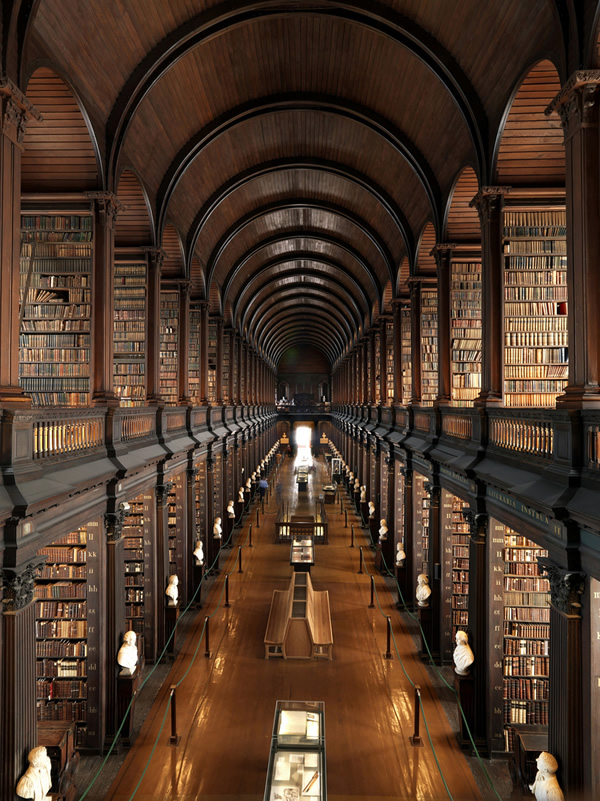
 In the 97,100 square miles that constitute the State of Wyoming, there are only two escalators: one at a mall in Jackson and another at an airport in Casper. That's it. Megan Garber of The Atlantic explains why:
In the 97,100 square miles that constitute the State of Wyoming, there are only two escalators: one at a mall in Jackson and another at an airport in Casper. That's it. Megan Garber of The Atlantic explains why: (
(






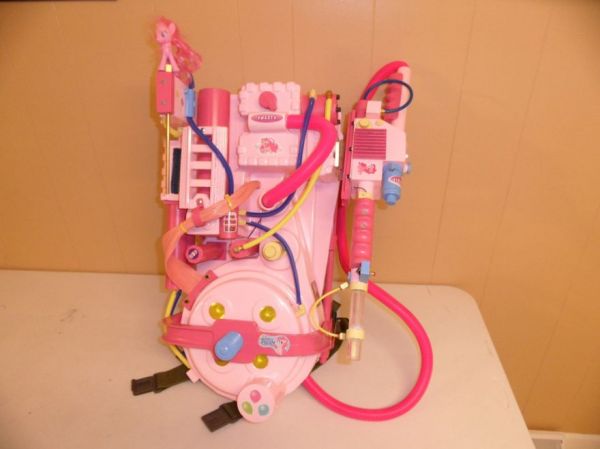


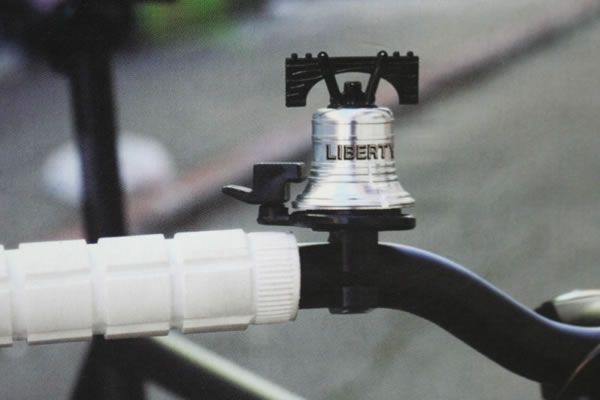

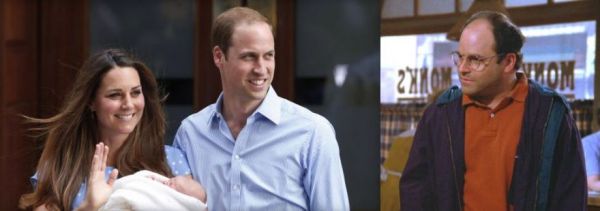 (Images: Associated Press, NBC)
(Images: Associated Press, NBC) (
(



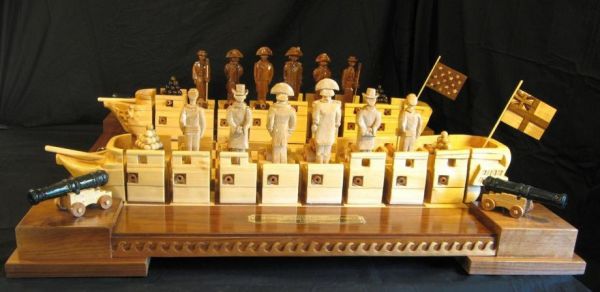

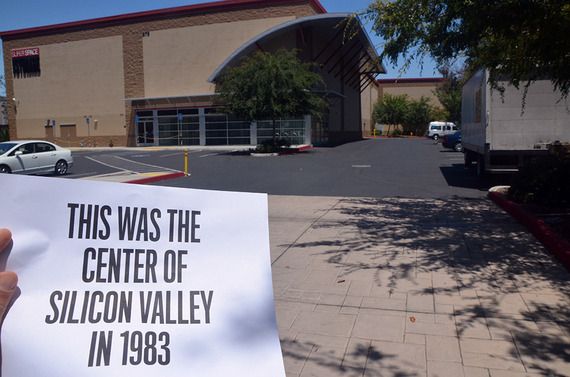


 (
(




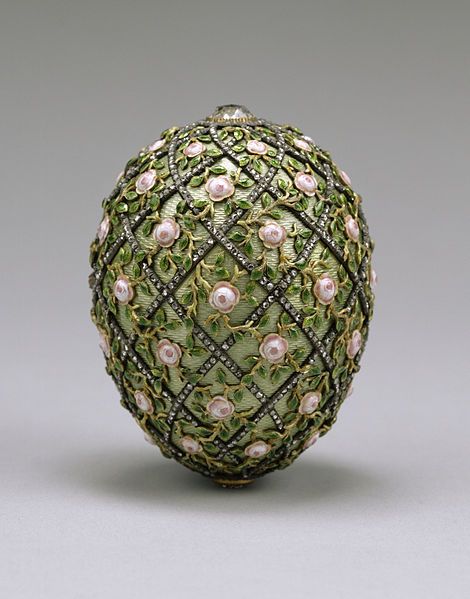 You’ll need more than a map and a shovel to find these cultural gems. But trust us, it will be worth the effort.
You’ll need more than a map and a shovel to find these cultural gems. But trust us, it will be worth the effort.
 Contrary to what your history teacher said, Abraham Lincoln’s finest speech didn’t begin with the phrase “four score.” Instead, it was a thunderous antislavery oration delivered to the first convention of the Illinois Republican Party on May 29, 1856. Schoolchildren don’t recite these words for a simple reason: Nobody wrote them down.
Contrary to what your history teacher said, Abraham Lincoln’s finest speech didn’t begin with the phrase “four score.” Instead, it was a thunderous antislavery oration delivered to the first convention of the Illinois Republican Party on May 29, 1856. Schoolchildren don’t recite these words for a simple reason: Nobody wrote them down. Two years before soccer’s governing body, FIFA, staged the first World Cup in 1930, it commissioned a trophy to match the quadrennial tournament’s prestige: a gold-plated silver cup atop a sculpture of the Greek goddess Nike. After every tournament, the victorious nation would hold onto the fancy hardware until the next Cup. As added incentive, the first nation to win the Cup three times would become the trophy’s permanent owner.
Two years before soccer’s governing body, FIFA, staged the first World Cup in 1930, it commissioned a trophy to match the quadrennial tournament’s prestige: a gold-plated silver cup atop a sculpture of the Greek goddess Nike. After every tournament, the victorious nation would hold onto the fancy hardware until the next Cup. As added incentive, the first nation to win the Cup three times would become the trophy’s permanent owner. When the Modern Library pegged Arthur Koestler’s 1940 novel, Darkness at Noon, as the eighth-best English-language novel of the 20th century, it was a curious choice. Not because the book is bad; the incredible account of a Communist revolutionary’s fall from grace, imprisonment, and interrogation gave the West a glimpse of the paranoia and repression that infected Stalin’s regime. No, praising Darkness at Noon as an English-language novel is odd because it was written in German.
When the Modern Library pegged Arthur Koestler’s 1940 novel, Darkness at Noon, as the eighth-best English-language novel of the 20th century, it was a curious choice. Not because the book is bad; the incredible account of a Communist revolutionary’s fall from grace, imprisonment, and interrogation gave the West a glimpse of the paranoia and repression that infected Stalin’s regime. No, praising Darkness at Noon as an English-language novel is odd because it was written in German. (Image credit:
(Image credit:  The Bishop of Ghent probably wished he’d stayed in bed on the morning of April 11, 1934. The Belgian clergyman awoke to learn that a burglar had broken into St. Bavo’s Cathedral and pilfered a section of “The Adoration of the Mystic Lamb,” a 15th-century altarpiece and national treasure painted by Flemish masters Hubert and Jan van Eyck. Because swiping the entire artwork would have been cumbersome—it measures 11.5 by 14.5 feet—the thief instead boosted two of the 20 panels, including “The Just Judges,” the bottom left section.
The Bishop of Ghent probably wished he’d stayed in bed on the morning of April 11, 1934. The Belgian clergyman awoke to learn that a burglar had broken into St. Bavo’s Cathedral and pilfered a section of “The Adoration of the Mystic Lamb,” a 15th-century altarpiece and national treasure painted by Flemish masters Hubert and Jan van Eyck. Because swiping the entire artwork would have been cumbersome—it measures 11.5 by 14.5 feet—the thief instead boosted two of the 20 panels, including “The Just Judges,” the bottom left section. (
(
 This picture is of the reconstruction.
This picture is of the reconstruction. The above article by Ethan Trex is reprinted with permission from the
The above article by Ethan Trex is reprinted with permission from the  entertaining website and blog today for more!
entertaining website and blog today for more!